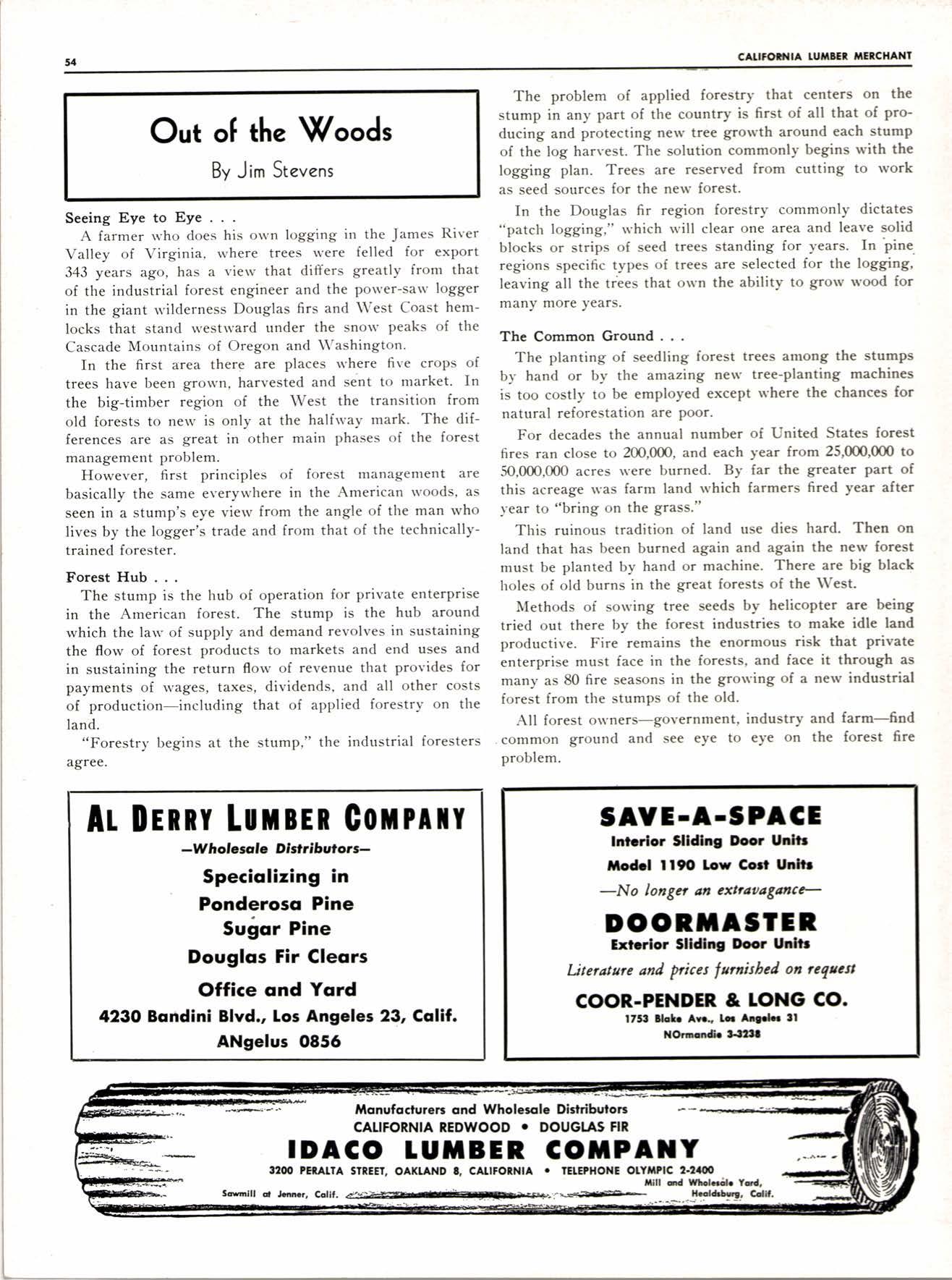
1 minute read
Out of the \(/oods
By Jim Stevens
Seeing Eye to Eye
A farmer rvho does his otvn logging in the James River Valley of Virginia, rvhere trees were felled for export 343 years ago, has a vierv that differs greatly from that of the industrial forest engineer and the power-sal\' logger in the giant 'n'ilderness Douglas firs and \\rest Coast hemlocks that stand lvestrvard under the snorv peaks of the Cascade Mountains of Oregon and \\rashington.
In the first area there are places n'here fir'e crops of trees have been grorvn, harvested and sent to nlarket. In the big-timber region of the West the transition from old forests to nerv is only at the halfrvav mark. The differences are as great in other main phases of the forest management problem.
However, first principles of forest management are basically the same everywhere in the American lvoods, as seen in a stump's eye vierv from the angle of the man who lives by the logger's trade and from that of the technicallytrained forester.
ForestHub...
The stump is the hub of operation for private enterprise in the American forest. The stump is the hub around which the lau' of supply and demand revolves in sustaining the flow of forest products to markets and end uses and in sustaining the return florv of revenue that provides for payments of rvages, taxes, dividends, and all other costs of production-including that of applied forestry on the land.
"Forestry begins at the stump," the industrial foresters agree.










